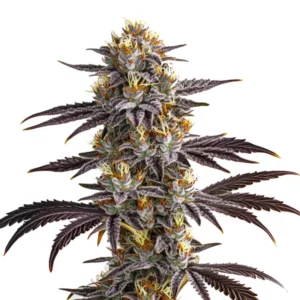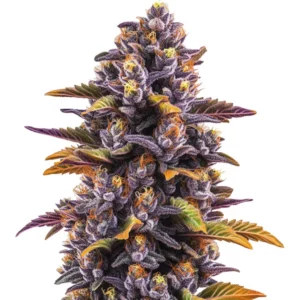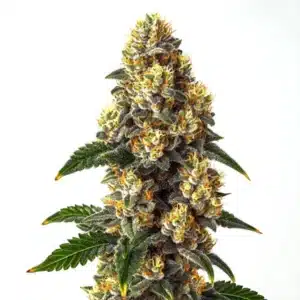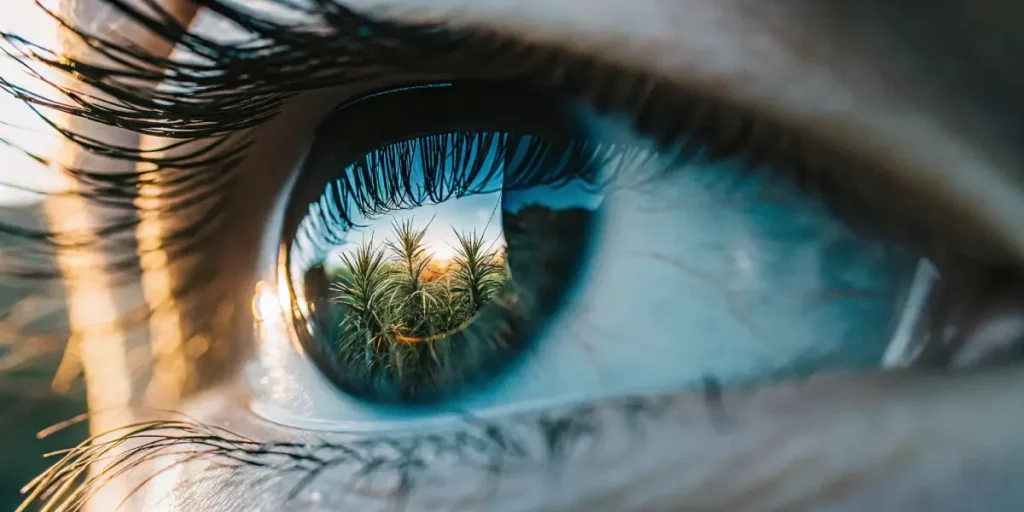
Photoreceptors and Cannabis: A Beginner’s Guide
When diving into the fascinating world of cannabis cultivation, knowing how light affects your plants is crucial. Photoreceptors and Cannabis: A Beginner’s Guide explains how these specialized cells in the leaves respond to light. They essentially act like solar panels, helping plants convert light into energy and driving healthy growth.
In cannabis plants, photoreceptors are sensitive to different wavelengths of light. They use this ability to regulate growth and flowering. By manipulating light exposure, you can influence how your plants grow. This is where cannabis and photoreceptors come together to create magic in your garden.
Recommended Strains
Purple Kush
|
|
THC | 17% - 27% (Medium) |
|
|
Type | Feminized |
|
|
Yield | Medium |
|
|
Phenotype | 30% Indica / 70% Sativa |
Blue Dream
|
|
THC | 17% - 24% (Medium) |
|
|
Type | Feminized |
|
|
Yield | High |
|
|
Phenotype | 50% Indica / 50% Sativa |
For those who are just starting their journey or seasoned growers looking to optimize yields, knowing the function of photoreceptors in cannabis cultivation is critical. Let’s delve into how this interplay works and why it matters.
Photoreceptor Function and Cannabis Use
Photoreceptors in cannabis plants are primarily influenced by the light spectrum. Blue light tends to promote vegetative growth, while red light encourages flowering. By adjusting light exposure, you can control the life cycle of your cannabis plants.
For instance, during the vegetative stage, your cannabis plants will thrive under blue light. This wavelength helps them grow strong and healthy stems and leaves. When it’s time to flower, switching to red light can enhance bud production. This simple yet effective manipulation of light can significantly impact your yield.
The importance of knowing photoreceptor function and cannabis use cannot be overstated. By tailoring light conditions to the specific needs of your plants, you can ensure they receive the optimal energy for each growth stage. This practice not only boosts plant health but also enhances the quality of the final product.
Furthermore, the strategic use of light can minimize energy consumption by reducing unnecessary light exposure. This efficiency is particularly beneficial for indoor growers who aim to balance energy use with high-yield outputs. Mastering these techniques can transform your cultivation practices, as highlighted in Photoreceptors and Cannabis: A Beginner’s Guide.
Practical Examples of Light Manipulation
Imagine you’re growing Purple Kush from Blimburn Seeds. During the early stages, you’d want to focus on providing ample blue light. This will help your Purple Kush develop robust foliage, setting the stage for a bountiful harvest.
Once the plants have matured, introducing more red light will encourage flowering. This transition mimics the natural cycle of sunlight throughout the year. Your Purple Kush will respond by producing dense, potent buds.
Photoreceptors and Cannabis: A Beginner’s Guide emphasizes the importance of experimenting with different light intensities and durations. This exploration can reveal unique growth patterns and potential enhancements in plant vigor. By observing how plants react to various light setups, growers can fine-tune their techniques for optimal results.
Additionally, technology such as programmable LED lights allows for more precise control over light conditions. This advancement provides growers with the tools to create custom lighting schedules, further aligning with the photoreceptor needs of cannabis plants. These innovations make achieving high yields more accessible than ever.
Promos & Deals
Cannabis Impact on Photoreceptors
While photoreceptors are essential for cannabis plants, they also play a role in human vision. In humans, photoreceptors are located in the retina and are responsible for converting light into visual signals. They allow us to see the world around us.
Interestingly, there’s an intersection between how cannabis affects human photoreceptors and plant photoreceptors. Cannabis use can influence visual perception, although research is still ongoing to fully understand this effect.
The cannabis impact on photoreceptors in humans is a fascinating area of study. Researchers are exploring how cannabinoids might alter the functioning of these cells, potentially leading to shifts in visual acuity or perception. Knowing these interactions could open new avenues for both therapeutic and recreational applications.
Moreover, the photoreceptor function and cannabis use relationship highlights the intricate ways in which plants and humans can be connected through shared biological processes. This connection underscores the potential for cannabis to influence a range of sensory experiences, including visual perception.
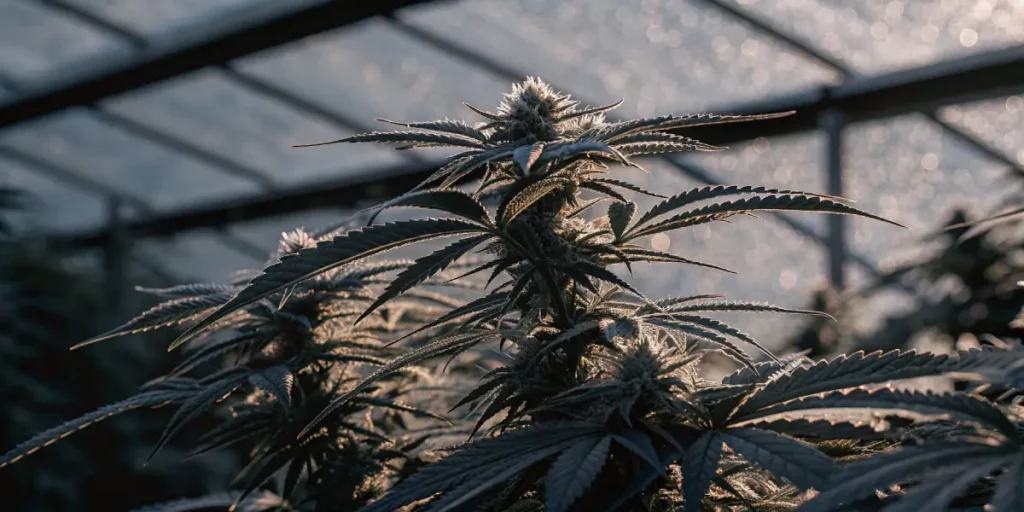
How Cannabis Affects Eye Photoreceptors
Some users report changes in vision after consuming cannabis. This can include enhanced colors or altered depth perception. These effects are thought to arise from cannabis’s interaction with the photoreceptors in the human eye.
For example, consuming a strain like Blue Dream from Blimburn Seeds might lead to a more vivid visual experience. This is due to the strain’s unique terpene profile interacting with your body. It’s a fascinating phenomenon, showcasing the complex relationship between cannabis and photoreceptors.
The way cannabis affects eye photoreceptors is an intriguing phenomenon that varies widely among users. While some may experience heightened visual clarity or brightness, others might notice subtler changes. This variability is likely due to differences in individual physiology and the specific strains consumed.
Knowing cannabis influence on visual photoreceptors can enhance the user experience by allowing individuals to select strains that align with their desired outcomes. As research progresses, we may gain deeper insights into these effects, potentially leading to more tailored and effective cannabis products.
Beginner Guide to Cannabis and Photoreceptors
As you embark on cultivating cannabis, knowing the influence of light is key. Photoreceptors in cannabis plants are your allies in achieving successful growth. By tailoring your light setup, you can maximize your garden’s potential.
Don’t be afraid to experiment with different light sources and schedules. Many growers find that LEDs provide a balanced spectrum for both vegetative and flowering stages. This flexibility can help you achieve consistent results throughout the growing cycle.
The beginner guide to cannabis and photoreceptors provides invaluable insights for those new to cultivation. By grasping the basics of light manipulation, you can create a thriving environment that supports robust plant health and impressive yields. This foundational knowledge is a stepping stone to more advanced growing techniques.
For beginners, it’s crucial to approach cannabis cultivation with curiosity and patience. Learning how to adjust light conditions effectively takes time and practice, but the rewards are well worth the effort. By following guidance from resources like Photoreceptors and Cannabis: A Beginner’s Guide, you can embark on a successful growing journey.
Choosing the Right Cannabis Strains
Consider strains like Gelato from Blimburn Seeds This strain thrives under well-managed light conditions, producing flavorful and potent buds. It’s an excellent choice for growers looking to explore the interplay between light and plant growth.
Remember, each strain has its own unique requirements. Pay attention to how different photoreceptor responses can affect your chosen strains. This knowledge will empower you to make informed decisions about lighting and cultivation techniques.
When selecting cannabis strains, knowing the specific light needs of each variety can make a significant difference in your cultivation success. Strains that are well-suited to your lighting setup will not only grow more vigorously but will also produce higher quality yields.
Additionally, considering how cannabis affects eye photoreceptors can guide your strain choices if you’re interested in enhancing visual experiences. Strains with distinct terpene profiles may offer unique sensory effects, adding an extra layer of enjoyment to both cultivation and consumption.
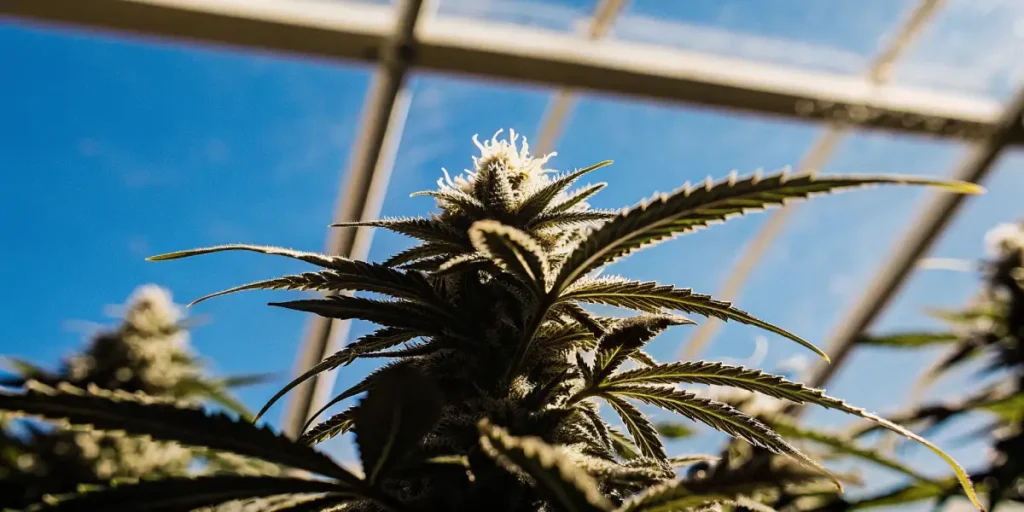
FAQs
What are photoreceptors in cannabis plants?
Photoreceptors in cannabis plants are cells that respond to light. They help the plant convert light into energy, driving growth and flowering. These cells are sensitive to different light wavelengths, allowing growers to influence plant development by adjusting light exposure.
For instance, during the vegetative stage, blue light promotes healthy leaf and stem growth. Red light, on the other hand, encourages flowering, making it a crucial part of the plant’s reproductive cycle. Knowing these functions can help optimize your growing conditions.
Photoreceptors and Cannabis: A Beginner’s Guide highlights the critical role these cells play in ensuring healthy plant development. By recognizing the importance of light wavelength and duration, growers can fine-tune their strategies to maximize plant health and yield.
Additionally, photoreceptors are integral to the plant’s ability to adapt to changing environments. As cannabis cultivation continues to evolve, the insights gained from studying these cells will undoubtedly lead to more innovative and effective growing practices.
How does cannabis affect human photoreceptors?
Cannabis can influence human photoreceptors, which are located in the retina of the eye. Some users experience changes in vision, such as enhanced color perception or altered depth perception. These effects are thought to result from cannabis interacting with the photoreceptors.
The impact on visual photoreceptors can vary among individuals. While some may find their vision enhanced, others might not notice any changes. It’s always best to start with a small dose and observe how your body reacts before consuming more.
Exploring how cannabis affects eye photoreceptors can provide deeper insights into the sensory effects of cannabis use. This knowing can inform choices around strain selection and consumption methods, enhancing the overall user experience.
As research into cannabis influence on visual photoreceptors continues, we may discover new ways to harness these effects for therapeutic purposes. The potential for cannabis to offer novel solutions for vision-related conditions is an exciting frontier for both science and medicine.
Can different strains affect the interaction with photoreceptors?
Yes, different cannabis strains can have varying effects on photoreceptors. This is largely due to each strain’s unique combination of cannabinoids and terpenes. For example, a strain like Purple Kush might enhance visual experiences differently than Blue Dream.
When selecting a strain, consider what kind of experience you’re seeking. If you’re interested in experimenting with visual effects, strains with high terpene profiles may be worth exploring. Always remember that individual reactions can differ.
Knowing how different strains impact photoreceptors can guide you in creating personalized cannabis experiences. By paying attention to how specific strains interact with your senses, you can tailor your use to achieve desired effects.
As you explore the vast array of cannabis strains available, consider experimenting with new varieties to uncover unique interactions with photoreceptors. This exploration can lead to a richer appreciation of the diverse sensory experiences cannabis has to offer.
What light conditions are best for cannabis growth?
Optimal light conditions for cannabis growth depend on the plant’s life stage. During the vegetative phase, blue light helps with robust leaf and stem development. In the flowering stage, red light is more beneficial, encouraging bud production.
Many growers use LEDs for their versatility and efficiency. They can provide a balanced spectrum suitable for both stages. Experimenting with light schedules can also yield positive results. Adjustments like an 18/6 or 12/12 light cycle can benefit your plants.
Photoreceptors and Cannabis: A Beginner’s Guide emphasizes the importance of matching light conditions to the specific needs of your plants. This alignment ensures that your cannabis receives the right energy for each developmental phase, leading to healthier and more productive growth.
Advanced lighting technologies offer growers unprecedented control over their growing environments. By leveraging these tools, you can create custom light setups that optimize photoreceptor activation and enhance overall plant performance, regardless of your cultivation goals.
Why is it important to understand photoreceptors as a cannabis grower?
Grasping the concept of photoreceptors is essential for maximizing your cannabis garden’s potential. These cells play a significant role in how your plants grow and produce buds. By managing light exposure, you can directly influence your crop’s performance.
For both novice and experienced growers, knowledge of photoreceptors can lead to more effective growing strategies. This translates to healthier plants, increased yields, and a deeper knowing of plant biology, enhancing your cultivation skills.
Knowing the cannabis impact on photoreceptors is a cornerstone of successful cultivation. By mastering this aspect of plant biology, growers can unlock new levels of efficiency and quality in their gardens, achieving results that surpass traditional methods.
Ultimately, the insights gained from studying photoreceptors empower growers to make informed decisions about their practices. This knowledge not only improves crop outcomes but also enriches the overall growing experience, making it more rewarding and fulfilling.







